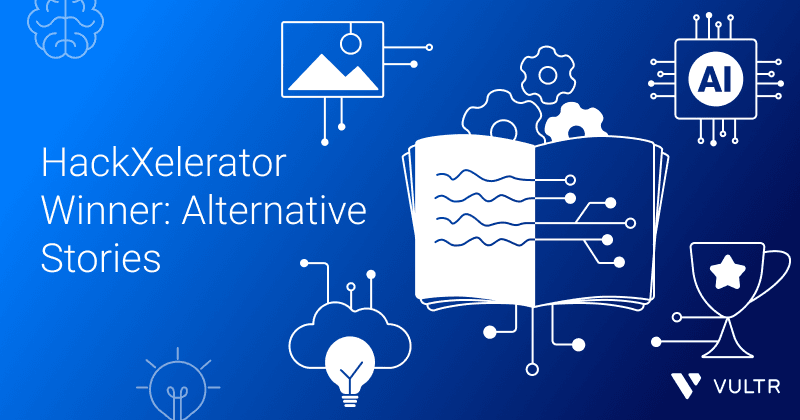Alternative Stories is an AI-powered, text-based adventure game that pushes the boundaries of traditional gameplay by integrating immersive theatre mechanics, real-world interaction, and multimodal AI. Created during the 20-day KXSB HackXelerator sprint, the project won the Gaming category for its innovation in narrative design and use of cutting-edge generative tools.
The challenge
The team set out to explore how AI – specifically large language and vision models – could power a narrative experience that moves beyond in-game dialogue options and controller inputs. The goal was to design a system where a player’s physical environment and media inputs (photos, voice, etc.) could shape the story's direction, enabling a new genre of reactive, real-world-integrated gameplay.
Inspiration and concept
The idea was born from a fascination with how LLMs could disrupt storytelling and game design. Drawing inspiration from projects like 1001 Nights by Ada Eden – which combines LLM-generated text with pixel visuals – the team wanted to go a step further. By blending the dynamic responsiveness of immersive theatre with the storytelling power of LLMs, Alternative Stories aimed to bridge the digital and physical worlds, laying the groundwork for next-gen VR/AR games.
Creative process
Over the 20-day sprint, the concept went through multiple iterations:
- Initial Concept: A one-on-one AI storytelling guide. This was abandoned due to a lack of narrative depth.
- Second Iteration: A group-chat-based format with multiple AI characters. While novel, it limited story development and felt too much like a messaging app.
- Final Implementation: A traditional, interactive, novel-style interface enriched with static image generation and multimodal input (via the user’s camera). This format struck the right balance between feasibility and narrative immersion.
While audio-based gameplay was initially part of the vision, it was deprioritized to stay within time constraints.
Technical architecture
The project’s AI stack was centered around the Mistral model family, each chosen for its unique capabilities:
- Mistral Large: Used for deep narrative development and initial storyworld construction. Its slower but higher-quality output served as the foundation for consistent storytelling.
- Ministral (small model): Powered real-time user interactions and incremental plot development.
- Pixtral (vision model): This model enables players to influence the narrative through image inputs from their environment, enhancing multimodal interactivity.
The team integrated Luma’s models for image and video generation, though ultimately, due to generation speed and game pacing, it relied more on static imagery.
The full-stack setup included:
- Frontend: React + Next.js
- Backend: Python + FastAPI
- Database: PostgreSQL
- Hosting: Vercel (frontend), Render (backend and database)
Key challenges
- Prompt Engineering: Maintaining narrative coherence and structured output (e.g., JSON) required breaking down prompts into smaller, more controlled stages.
- Media Latency: Generating high-quality visuals in real-time conflicted with the flow of gameplay. To solve this, images were delivered asynchronously – appearing once ready, without blocking the story’s progression.
Community and support
HackXelerator’s Discord community and event mentors were pivotal in troubleshooting and brainstorming. The opening session helped the team refine their focus and engage with peers building similarly ambitious projects.
Impact and future development
Alternative Stories demonstrates the feasibility of multimodal, LLM-driven games that react not just to typed commands but to a player’s physical inputs and environment. It validates a new direction in AI gaming – one that blends immersive storytelling, real-world interactivity, and generative media.
Looking forward, the team plans to:
- Integrate audio input/output to naturalize interactions further
- Explore real-time video synthesis for dynamic scene creation
- Build toward augmented reality (AR) integration, using spatial computing to bring stories off the screen and into physical space
With support from HackXelerator sponsors, Alternative Stories will continue evolving into a richer, more immersive gaming experience – a glimpse into the future of AI-native, spatial storytelling.

